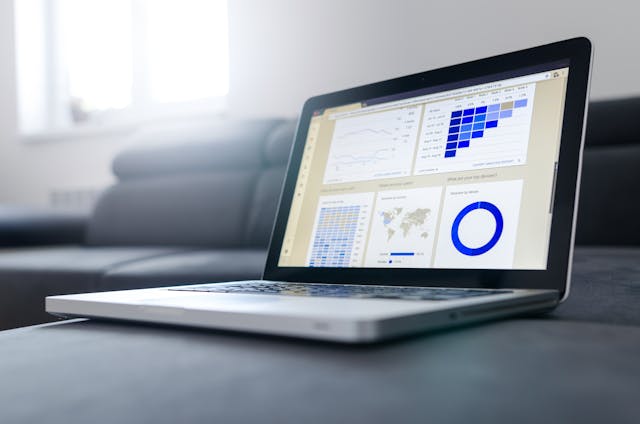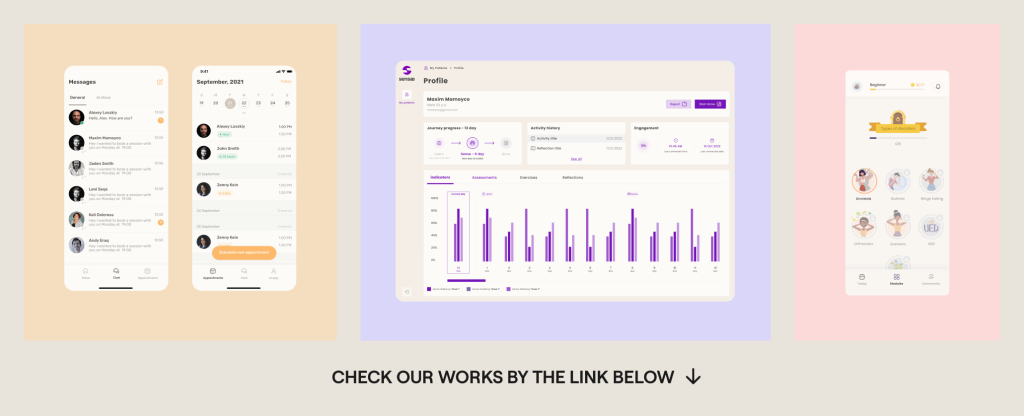What is Predictive Analytics in Healthcare All About?
While 95% of physician groups and hospitals have access to advanced analytics for decision-making support, a striking 80% of healthcare managers report negligible usage of these tools. One contributing factor is the limited understanding of how advanced analytics can benefit both the community and the healthcare organization.
So, what is predictive analytics in healthcare? Imagine being able to peek into the future and see what’s coming next—predictive analytics does just that by analyzing current and past data. Using cool tools like statistical modeling, data mining, AI, and machine learning, it helps forecast future events and trends.
It works with all sorts of healthcare data. Think about structured data like electronic health records (EHRs), and unstructured data, such as clinical notes and imaging reports. It even taps into big data to shed light on patient care, resource management, and health outcomes.
Healthcare pros, from IT operators to care managers, use predictive analytics to dig up insights and make operations run smoother. So, it’s like having a crystal ball but way more scientific and reliable.
How to use predictive analytics in healthcare
The healthcare industry churns out massive amounts of data but often struggles to turn that data into valuable insights for better patient care. That’s where data analytics steps in, revolutionizing everything from patient care to operational management. It digs into improving patient care, forecasting disease outbreaks, cutting treatment costs, and much more. On the business side, analytics helps healthcare organizations streamline their internal operations, make better use of resources, and boost the coordination and efficiency of care teams.
So, how does data analytics really make a difference? What about predictive analytics in healthcare use cases? Here’s how to use predictive analytics in healthcare:
– Clinical research: helps in advancing clinical research, paving the way for groundbreaking studies.
– New treatments development: assists in the creation of innovative treatments.
– Drug discovery: accelerates the discovery of new drugs.
– Disease prediction and prevention: enables the prediction and prevention of diseases before they become widespread.
– Clinical decision support: enhances clinical decision-making processes.
– Accurate diagnoses: facilitates quicker and more precise diagnosis of medical conditions.
– Surgical and medication success: increases the success rates of surgeries and medications.
– Administrative automation: streamlines hospital administrative tasks.
– Health insurance rates: improves the accuracy of calculating health insurance rates.
By transforming raw healthcare data into actionable insights, data analytics is having a monumental impact on the healthcare sector.

How predictive analytics works in healthcare
Let’s dive into how predictive analytics in healthcare is broken down into four main stages. Predictive analytics healthcare companies use it:
- Data collection: first, we gather info from all sorts of places—everything from structured data, public health records, and even cool gadgets like wearable tech.
- Preprocessing: next up, we clean that data to make sure it’s accurate and relevant.
- Modeling: then, we use algorithms to predict outcomes and make recommendations for different patient groups.
- Interpretation of results: finally, we use these insights to make smart decisions and shape policies.
These steps are like having a roadmap, whether you’re a doctor on the front lines or a data whiz behind the scenes. Picture a provider using a list of key questions for an at-risk pre-diabetic patient. Or imagine a data scientist creating a model that changes how cancer care is delivered in a hospital. Many teams across the healthcare spectrum can leverage predictive analytics to make a real difference.
- Patients and members
– Early risk detection: predictive analytics identifies potential health risks before they become severe, enabling early diagnosis and preventive care. This is especially crucial for managing chronic conditions like heart disease and diabetes.
– Personalized treatment plans: by analyzing patient data, predictive models help create tailored treatment plans that meet individual health needs, improving the effectiveness of care.
– Automated messaging: sends personalized reminders and health tips, encouraging patients to stay engaged with their health through regular check-ups and preventive measures. This proactive approach promotes better health outcomes and continuous care.
- Care managers and liaisons
Care managers use predictive analytics to focus their efforts where they’re needed most:
– Registry and care gap lists: identifies patients with multiple chronic conditions, enabling additional care and support.
– Care management: pinpoints high-need patients for intensive care management and monitors post-acute care to intervene proactively.
- Point-of-care clinical teams
Clinicians face many choices in diagnosis and treatment. Predictive analytics provides:
– Point-of-care decision support: enhances diagnostics with machine-learning algorithms and manages emergencies with real-time big data analytics healthcare.
- Coders and billers
Predictive analytics streamlines coding and billing processes:
– Clinical documentation improvement: helps measure risk, quality, and fraud, ensuring accurate patient documentation and compliance with regulations.
- Analysts and actuaries
Analysts and actuaries use predictive analytics for strategic planning and financial stability:
– Medical economics research and contract design: assesses financial risks and sustainability, guiding long-term planning.
– Data visualization and dashboard design: translates data into visual insights for better understanding and decision-making.
- Data scientists and clinical researchers
Predictive analytics drives new discoveries and sharper insights:
– Research and model design: supports the development of treatments and drugs through data mining and pattern recognition, essential for clinical trials.
- IT operators
IT operators ensure reliable and secure data infrastructure:
– Health data ETL: maintains data quality and security, essential for accurate predictive analytics.
– Data warehouse: provides a robust infrastructure for big data analytics healthcare, access and management, supporting various forms of data use across the organization.
Predictive analytics in healthcare not only enhances patient care but also supports various teams in making informed, data-driven decisions.

Challenges and Ethical Considerations
Even though predictive analytics is a game-changer in healthcare, it’s not without its hurdles.
Let’s dive into a few key concerns:
– Data security and privacy: health information is incredibly sensitive, making it a prime target for cyberattacks. To keep patient trust and comply with HIPAA regulations, providers need to ramp up their data security measures. It’s like guarding a treasure chest—only the best locks and alarms will do.
– Accuracy and reliability: predictive models need to be spot-on. Any mistakes or biases can lead to misdiagnoses or incorrect treatments, which can shake trust in these systems. Imagine relying on a GPS that occasionally gives wrong directions—it would be hard to trust it, right?
– Provider acceptance: getting providers on board with predictive analytics can be a tough sell. They need to see the value in collecting and analyzing data without it becoming a burden. It’s like learning to use a new tool—it takes time and effort, but the payoff needs to be worth it.
But don’t let these challenges make you think predictive analytics is doomed. With proper data access controls and getting consent before sharing info, providers can reap the benefits of predictive analytics in healthcare while keeping patient privacy intact. It’s all about knowing when and how to use this technology wisely and interpreting results with a critical eye.
Ethical issues, like tackling healthcare disparities and minimizing bias in data and algorithms, need constant attention. Just as implicit biases can creep into our everyday decisions, they can also infiltrate predictive algorithms, leading to unfair outcomes. It’s essential to keep a sharp eye on these outputs to ensure fairness and equity.
Pros and Cons of Predictive Analytics in Healthcare
Offering numerous benefits of predictive analytics in healthcare but also presenting certain challenges. Here’s a look at the pros and cons.
Pros
- Improved patient outcomes: predictive analytics can forecast patient deterioration, allowing for early intervention and better treatment plans. For example, AI-driven predictive models can identify patients at risk of readmission, enabling healthcare providers to implement preventive measures.
- Personalized treatment: by analyzing patient data, predictive analytics helps tailor treatments to individual needs. This customization can enhance the effectiveness of treatments and improve patient satisfaction.
- Operational efficiency: predictive analytics optimizes resource allocation, ensuring that healthcare facilities are adequately staffed and stocked. This leads to reduced wait times and improved overall efficiency.
- Cost reduction: by predicting patient needs and optimizing treatment plans, predictive analytics can significantly reduce healthcare costs. It helps in avoiding unnecessary tests and procedures, ultimately saving money for both providers and patients.
- Fraud detection: predictive analytics can identify patterns indicative of fraudulent activities, helping to prevent insurance fraud and reduce financial losses in the healthcare system.
- Enhanced decision-making: AI predictive analytics in healthcare analyze vast amounts of data quickly, providing healthcare professionals with insights that support better decision-making. These predictive analytics tools in healthcare can lead to more accurate diagnoses and effective treatment plans.
Cons
- Data privacy and security: the use of predictive analytics involves handling vast amounts of sensitive patient data. Ensuring this data is kept secure and private is a significant challenge, and any breach can lead to a loss of patient trust and legal repercussions.
- Accuracy and reliability: predictive models are only as good as the data they are trained on. Inaccurate or biased data can lead to incorrect predictions, which might result in misdiagnoses or inappropriate treatment plans.
- Implementation costs: setting up predictive analytics systems can be expensive and time-consuming. This includes the cost of software, hardware, and training for healthcare staff.
- Resistance to change: healthcare providers might resist adopting new technologies due to a lack of understanding or fear of change. Training and adjusting to new workflows can be daunting and met with resistance.
- Ethical concerns: there are significant ethical issues related to the use of predictive analytics in healthcare. These include potential biases in the data, which can lead to unfair treatment of certain patient groups, and the implications of relying too heavily on automated systems for critical healthcare decisions.
- Regulatory compliance: ensuring that predictive analytics systems comply with healthcare regulations (like HIPAA in the US) can be complex and burdensome. Non-compliance can result in severe penalties and legal challenges.
AI predictive analytics in healthcare holds immense potential for transforming healthcare. It can lead to better patient outcomes, predictive analytics in healthcare management, more efficient operations, and reduced costs. However, the challenges of data privacy, accuracy, implementation costs, resistance to change, ethical concerns, and regulatory compliance cannot be overlooked. Balancing these pros and cons is crucial for the successful integration of predictive analytics in healthcare.

Example of predictive analytics in healthcare
Let’s talk about predictive analytics in healthcare using big data.
- Readmission prevention
Think about this: nearly one in five adult patients ends up back in the hospital after discharge. To tackle this, healthcare providers are using predictive analytics to craft personalized discharge plans and identify those most at risk for readmission. This isn’t just a win for the patient—it also cuts down on the whopping $52.4 billion the U.S. healthcare system spends on readmissions every year. Plus, it helps the 82% of hospitals penalized under Medicare’s Hospital Readmission Reduction Program (HRRP) improve their metrics.
- Health insurance management
Predictive analytics offers health insurers a crystal ball of sorts, giving them insights into care utilization and costs. They can predict how often a patient might need hospital admissions or surgeries by looking at past data. They can also forecast expected healthcare costs, helping to streamline financial planning. And when it comes to fraud prevention, these analytics are gold. By spotting patterns in claims data, insurers can catch fraudulent activities early, potentially saving billions. Imagine cutting down on the 3% to 10% of healthcare funds lost to fraud—that’s about $300 billion saved!
- Population health management
The last example of predictive analytics in healthcare. Predictive analytics isn’t just about individual care; it’s about spotting trends across entire populations. Providers can use it to identify groups with similar health risks and even catch disease outbreaks before they spread. This proactive approach means they can develop timely treatment plans and improve overall population health. It’s like having a weather forecast for health, helping providers stay one step ahead of potential issues.
The Future of Predictive Analytics in Healthcare
Predictive analytics is reshaping every corner of healthcare, from early interventions to more personalized patient experiences. It’s like having a superpower that boosts efficiency, accuracy, and patient outcomes. As we look to the future, the role of predictive analytics will only grow, especially with emerging technologies like AI enhancing its capabilities.
For healthcare providers to fully harness this power, they need a solid foundation—think sophisticated architectures like lakehouses that integrate seamlessly into healthcare workflows. This is key to maximizing the benefits of predictive analytics, driving better patient outcomes, and achieving operational efficiencies.
With the right mix of innovation and thoughtful implementation, we can create a healthcare system that’s not just reactive but predictive and proactive. It’s a collaborative effort between tech advocates and healthcare pioneers, aiming to build a smarter, more efficient healthcare future.
Hope you found this article helpful!
Wondering who we are? We’re a digital health product studio dedicated to transforming healthcare experiences and setting new standards in digital healthcare. Our mission is to positively impact lives through innovative solutions.
We partner with healthcare startups to design and develop predictive analytics applications in healthcare.

Curious about our work? Check out our portfolio, featuring case studies of predictive analytics applications in healthcare, at: Nozomi Health Studio Portfolio.
Got questions or want to chat? Drop us an email at m@nozomihealth.com, and let’s discuss how we can add real value to your product.







